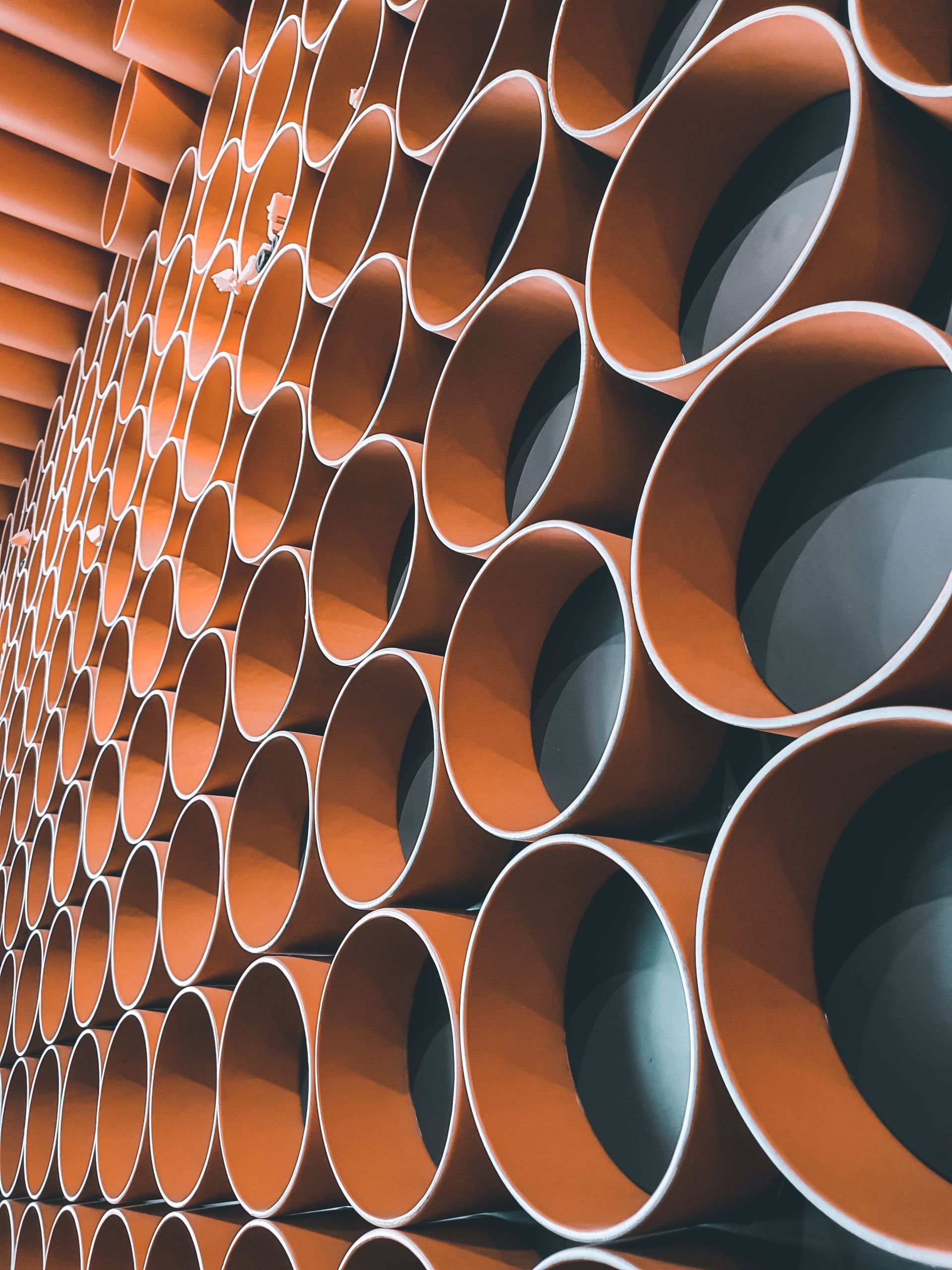Water Line Replacement
and Repair Services
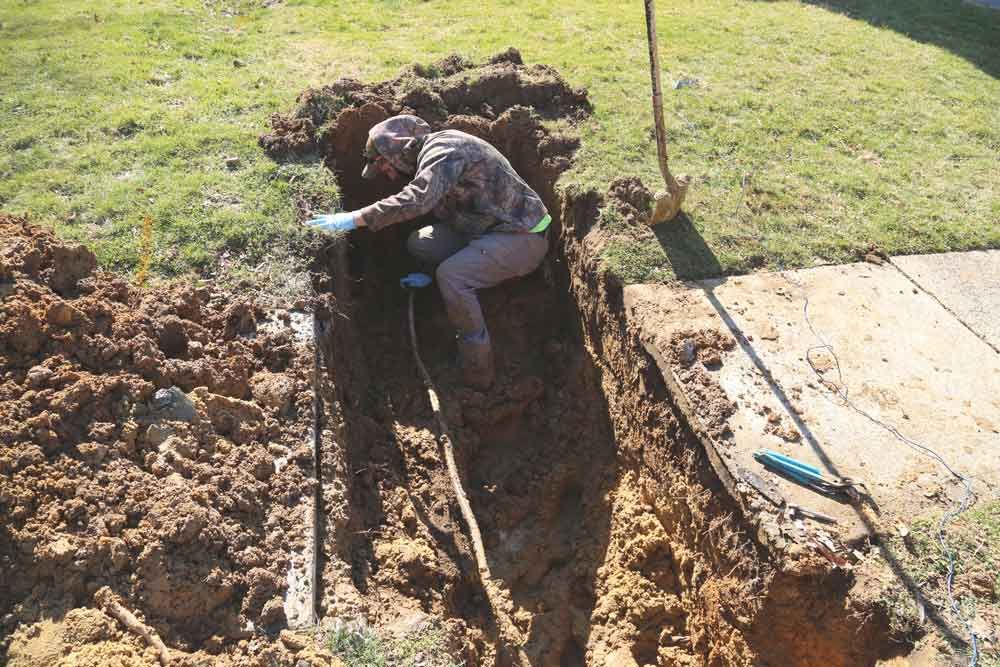
Water line replacement is crucial for maintaining safe and reliable urban water systems and addressing the issues caused by aging infrastructure.
Predictive analytics can significantly enhance the efficiency of maintenance programs, allowing for timely interventions that prevent severe breakdowns and minimize the need for reactive repairs.
Proactive replacement strategies are more cost-effective and cause less disruption than emergency repairs, highlighting the importance of scheduled maintenance plans (SpringerOpen) (Water Finance & Management).
Get a quote
Importance of Replacing Your Water Service Line
The integrity of your water service line directly affects water quality and pressure. Over time, pipes can degrade due to mineral build-up, ground movement, and wear, leading to potential health hazards and property damage. Replacing old lines ensures your system complies with current standards and runs efficiently.
Upgrading to new main water lines reduces the likelihood of future plumbing failures. It enhances water quality, increases property value, and can decrease monthly water bills by eliminating leaks from wastewater.
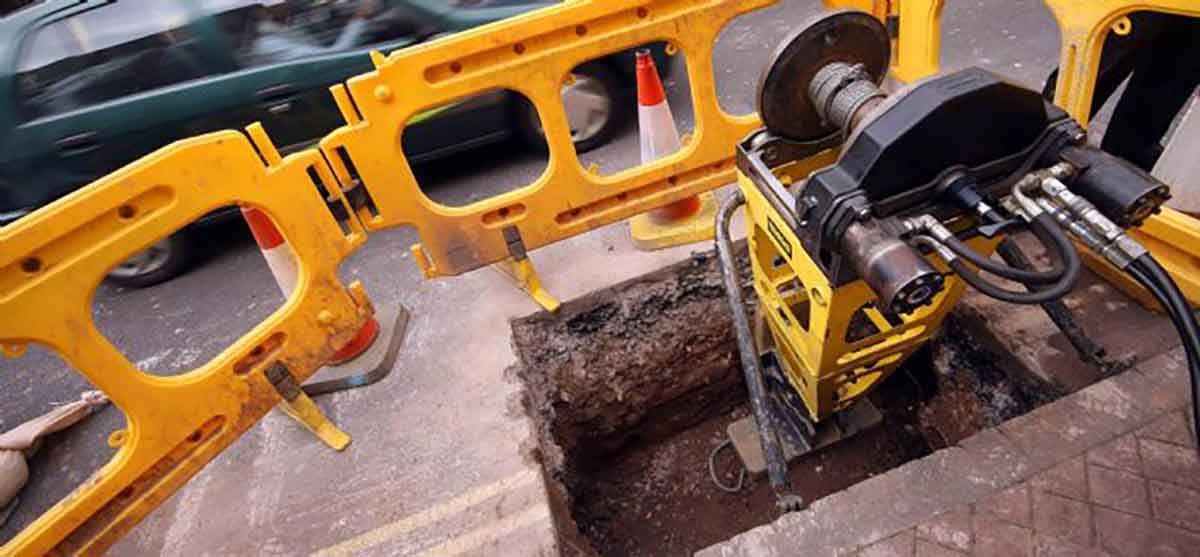
Do you need our water line services?
Avoid water line disruptions with our expert plumbing services. From inspections to emergency repairs, we focus on efficient, reliable solutions for your water line needs. Contact us online or call us to ensure a steady, clean water supply and maintained pressure.
Main Water Line Replacement
Signs You Need Main Water Line Replacement
Here are signs that you might need to replace your main water line:
- Changes in water pressure: A sudden drop or inconsistency in water pressure can indicate issues within the line.
- Odd pipe noises: Unusual sounds like banging or whistling from the pipes could suggest problems.
- Water discoloration or foul odor: Rusty-looking or foul-smelling water often indicates pipe corrosion or degradation.
- Unexpected spikes in water bills: Higher than usual can signal hidden leaks in the water line.
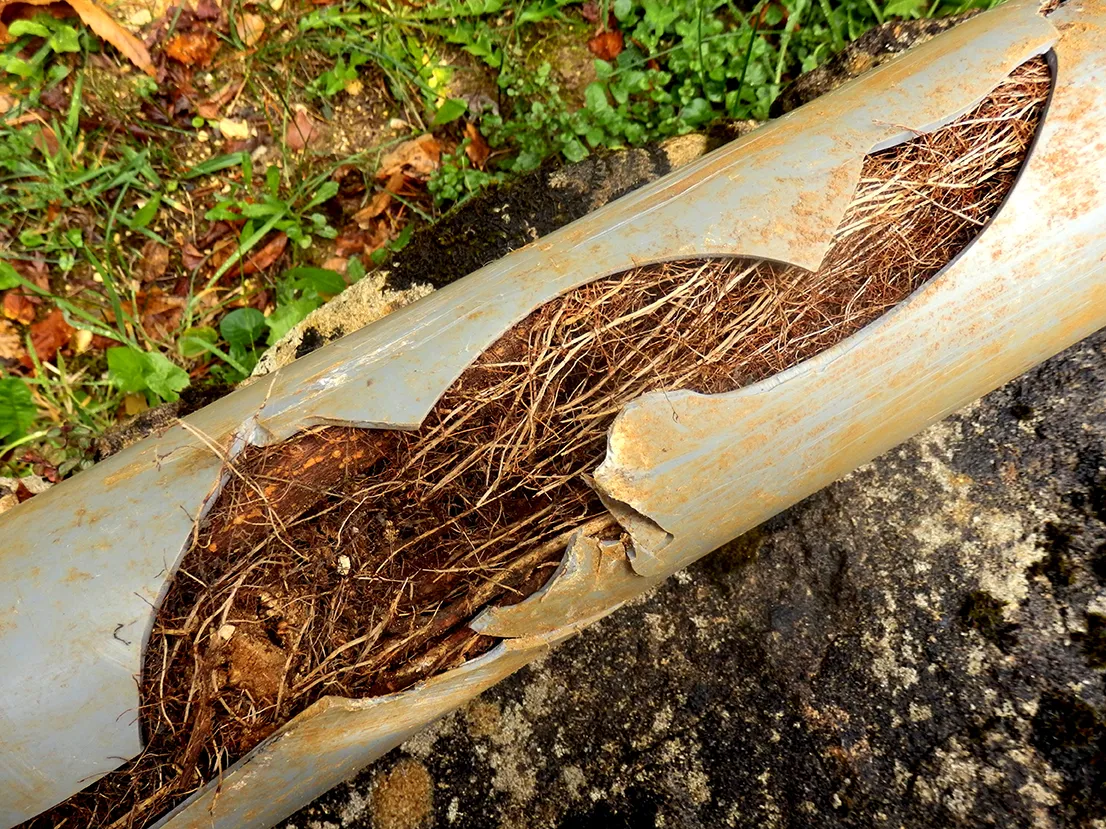
Process of Replacing Your Main Water Line
1. Initial Assessment:
We use video inspection tools to diagnose the condition of your pipes thoroughly.
2. Consultation and Recommendation:
Following the assessment, we engage in a personalized discussion with you, sharing the findings and tailoring our recommendation to your specific needs.
Depending on the severity of the damage, we recommend a partial or complete replacement.
3. Use of Trenchless Methods:
Our team utilizes trenchless plumbing methods where possible to minimize the impact on your property.
4. Post-Replacement Care and Maintenance:
We provide comprehensive care instructions and tips for monitoring your new water line after installation.
Regular checks and occasional maintenance help extend the life of your plumbing investments.
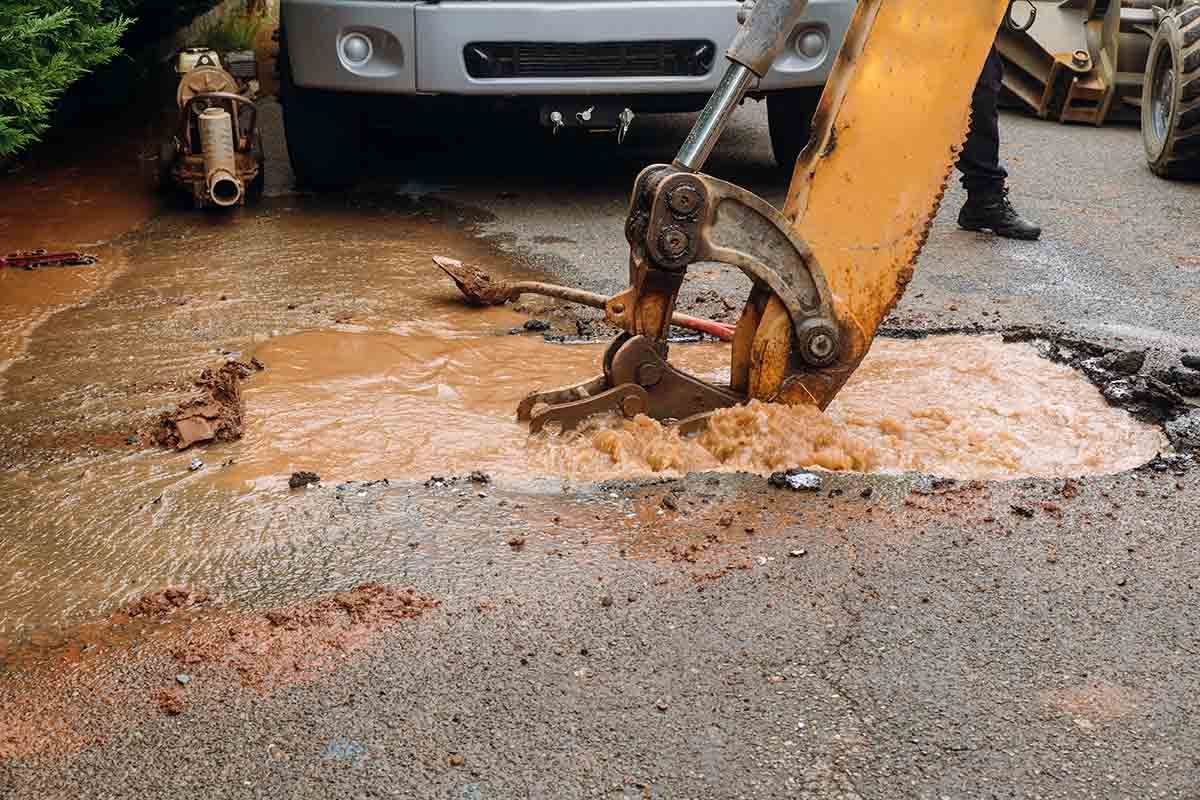
Trenchless Water Line Replacement Near Me
Trenchless technology is a modern solution that avoids major excavation, preserves your landscape, and significantly reduces repair time. This method is especially beneficial in urban cities like Philadelphia or landscaped areas in New Jersey where traditional digging would cause extensive disruption.
Here are some standard trenchless techniques used in replacing water main lines:
Pipe Bursting: The Pipe Bursting method involves breaking the existing pipe while simultaneously pulling a new pipe into place. A bursting head is attached to a replacement pipe and inserted into the old pipe. As it moves through, it fractures the old pipe outward and pulls the new one behind it. This is suitable for severely damaged pipes.
Cured-in-Place Pipe (CIPP) Lining: CIPP lining involves inserting a resin-saturated liner into the old pipe, which is then cured using heat, UV light, or ambient temperatures to form a rigid, smooth pipe within the old one. This method is ideal for pipes with minor to moderate damage and is highly effective at sealing leaks and preventing root intrusion.
Slip Lining: In slip lining, a new, smaller pipe is inserted into the existing pipe. The space between the old and new pipe is then filled with grouting material to stabilize the new pipe. This method is one of the oldest forms of trenchless rehabilitation but reduces the original pipe’s diameter.
Horizontal Directional Drilling (HDD): Directional drilling is used primarily for installing new pipelines under obstacles such as rivers, buildings, and roads. It involves drilling a pilot hole along the desired path of the pipe, enlarging the hole to accommodate the pipe size, and then pulling the pipe back through the hole.
Pipe Ramming: This method uses pneumatic or hydraulic machinery to drive a new pipe through the old one. It is particularly useful for soil conditions that are too tough for other trenchless methods, and it can be used for a wide range of pipe sizes.
Impact Moling: A soil displacement hammer (mole) creates a tunnel in the soil through which the new piping can be pulled. This method is less suitable for large-diameter pipes but is very effective for smaller residential plumbing jobs.
These methods are chosen based on the soil conditions, the extent and type of damage to the original pipe, environmental considerations, and the project’s cost-effectiveness. Each has its advantages and limitations, making the selection of the appropriate method crucial for the success of the replacement project.
Do you need our water line services?
Avoid water line disruptions with our expert plumbing services. From inspections to emergency repairs, we focus on efficient, reliable solutions for your water line needs. Contact us online or call us to ensure a steady, clean water supply and maintained pressure.
Common Issues that Require Water Line Repair
While water line replacement involves completely renewing your plumbing system’s main arteries, repairs typically address specific, localized issues before they necessitate a complete overhaul.
Here, we explore the common problems that typically require water line repair, contrasting these targeted fixes with the comprehensive replacement approach.
- Leaks: Small holes or cracks in the pipes can lead to significant water loss and damage. Leaks, which are among the most frequent reasons for water line repairs, can escalate quickly if not addressed promptly.
- Corrosion: Over time, metal pipes can corrode due to chemical interactions with the soil and water, leading to weak spots that may burst or leak.
- Clogs: Accumulating sediment, minerals, or debris can block water flow, necessitating a repair to restore proper water pressure and flow.
- Pipe Breaks: Severe issues, such as a burst pipe caused by freezing conditions, structural failures, or external impacts, require immediate repair to prevent extensive water damage.

Methods of Water Line Repair
Exploring the various methods of water line repair can help homeowners understand how professionals address different types of pipe damage, using techniques that minimize disruption and maximize efficiency.
- Clamping: For small leaks, a clamp can be placed around the pipe to seal it temporarily.
- Pipe Sleeving: This method involves inserting a smaller pipe inside the damaged pipe to cover the damaged area.
- Epoxy Lining: Involves applying an epoxy resin inside the pipe, which hardens to seal leaks and prevent future corrosion.
- Trenchless Repair Techniques: Cured-in-place pipe (CIPP) lining or slip lining is used to repair pipes without requiring extensive excavation.

Why Choose Root 24 for Trenchless Sewer Line Repair?
Prevents Water Loss
Fixing leaks quickly helps conserve water and reduce utility bills.
Avoids Property Damage
Water damage from leaks can lead to costly repairs in building structures and landscapes.
Improves Water Quality
Repairing corroded or old pipes can prevent contaminants from entering the water supply.
Maintains System Efficiency
Ensuring the water lines are in good condition helps maintain proper water pressure and system reliability.
Water line repair can vary depending on the severity and location of the damage. It’s crucial for property managers and homeowners to address these issues promptly to avoid more significant problems later.
Frequently Ask Questions
As a leading plumbing company that addresses your water line service needs, we’ve compiled answers to some common plumbing system concerns. Remember, our expert team is just a call away for professional assistance with any plumbing issue.
Contact us online for a quote
What do I Do If My Water Supply Line is Leaking?
Immediate action is crucial for a leaking water supply line to prevent extensive damage and water loss. First, turn off the main water supply. Then, identify the source of the leak. While some leaks can be temporarily fixed with patch kits or pipe clamps, getting professional help for a permanent solution is essential.
How Do You Fix a Leaking Underground Water Pipe?
Fixing an underground water pipe leak requires specialized skills. Our professionals use leak detection equipment to locate the leak accurately. The repair method depends on the leak’s severity – it may involve pipe clamping, epoxy application, or even pipe replacement. Excavation might be necessary, which our team handles with care to minimize landscape disturbance.
How Deep are Water Lines Buried in NJ?
In New Jersey, water lines are typically buried below the frost line to prevent freezing, usually at a depth of about 36 inches. However, this can vary based on local codes and the specific geographical area. Our team is familiar with NJ regulations and ensures that all installations and repairs comply with local standards.
How Do You Fix a Broken Outside Water Pipe?
Repairing a broken outside water pipe involves isolating the damaged section, cutting it out, and replacing it with a new pipe segment. If the plumbing system is PVC or copper pipe, specific tools and skills are required, which our experienced plumbers possess. Immediate professional intervention is vital to avoid water wastage and potential property damage.
How Long Does It Take to Fix a Broken Water Pipe Underground?
The time to fix a broken underground pipe can vary based on the damage extent, pipe location, and ground conditions. On average, it might take a few hours to a couple of days. Our team works efficiently to diagnose the issue quickly and perform repairs with minimal disruption.
